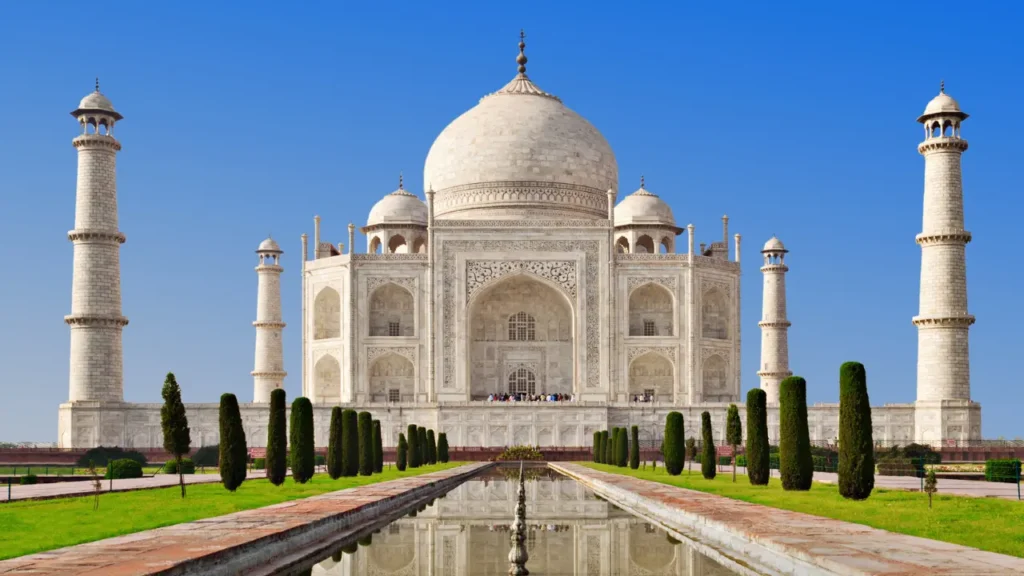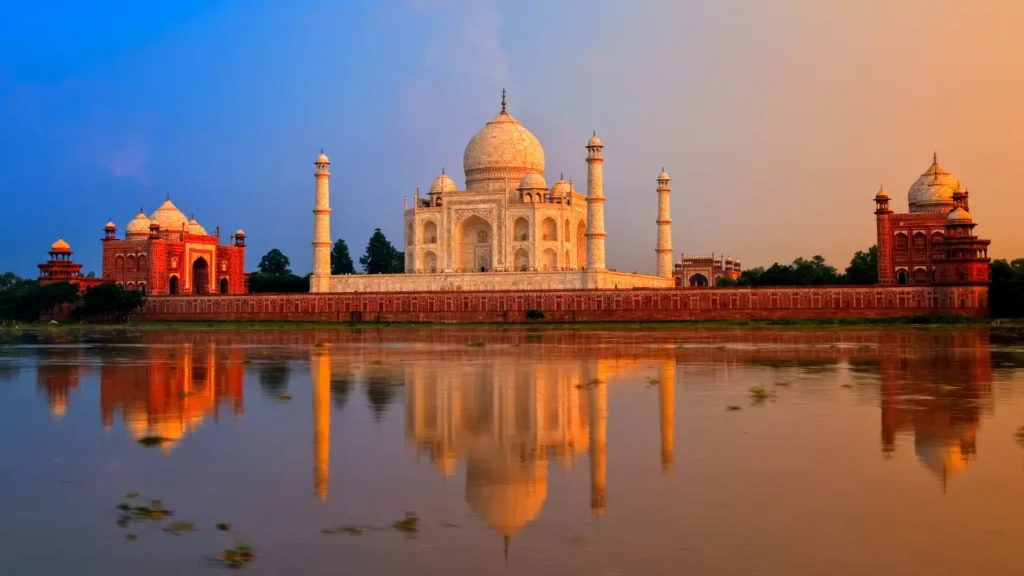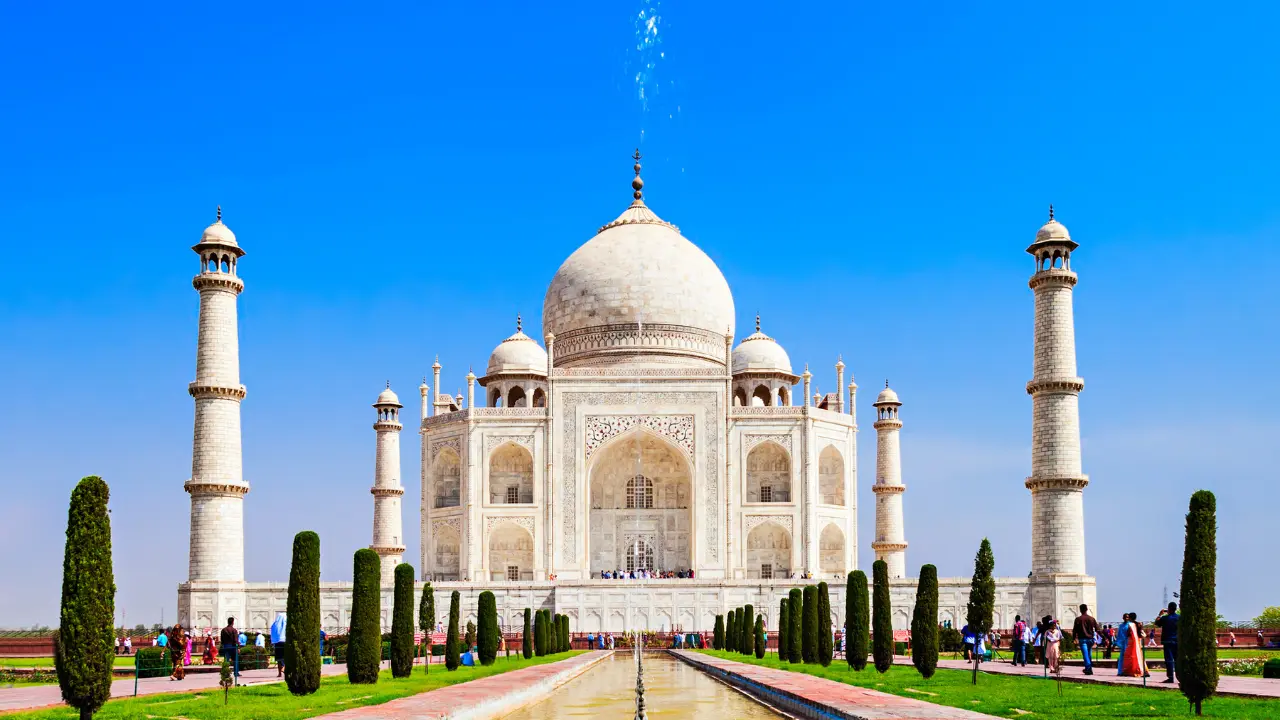10 Secrets of Taj Mahal: Unveiling the Eternal Beauty
The Taj Mahal, often referred to as the “crown of palaces,” stands as a symbol of eternal love and architectural magnificence. While its beauty and historical significance are widely recognized, there are several lesser-known secrets that add to its allure. In this article, we’ll delve into the mysteries that shroud this majestic monument and unveil ten secrets you didn’t know about the Taj Mahal.
1. Mughal Architectural Marvel
The History Behind its Creation
The construction of the Taj Mahal was initiated by Emperor Shah Jahan of the Mughal dynasty, as a heartfelt tribute to his cherished wife, Mumtaz Mahal. Its construction commenced in 1632 and took over twenty years to complete, involving the efforts of thousands of skilled artisans and laborers. The intricate architectural design is a blend of Persian, Indian, and Islamic styles, showcasing the cultural diversity of the Mughal Empire.
2. The Luminescent Marble- The Taj Mahal
A White Beauty Glowing at Night
One of the most remarkable aspects of the Taj Mahal is its ability to change hues throughout the day. Constructed using gleaming white marble, the monument appears to transform under the changing sunlight, exuding an ethereal glow during the night. This phenomenon is attributed to the high calcite content in the marble, which interacts with sunlight to create a unique radiance.
3. Perfect Architectural Symmetry
Precision Beyond Imagination
The Taj Mahal’s architectural symmetry is awe-inspiring. Its four minarets lean slightly outward to protect the main mausoleum in case of an earthquake—a design decision that showcases the meticulous planning and engineering prowess of the Mughal architects. The symmetry extends to the gardens and surrounding structures, creating a harmonious visual experience for visitors.

4. Ingenious Inlay Artwork
Semi-Precious Gemstone Embellishments
The Taj Mahal boasts intricate inlay work using semi-precious gemstones such as lapis lazuli, agate, and turquoise. These gems are meticulously carved and fitted into the marble surface to create breathtaking floral and geometric patterns. This delicate artistry reflects the dedication of skilled craftsmen who worked tirelessly to adorn the monument with exquisite details.
5. Hidden Calligraphy
Verses from the Quran
Amidst the ornate designs, calligraphy from the Quran is subtly incorporated into the architecture. The passages pay homage to the spiritual significance of the monument and reflect the depth of Shah Jahan’s devotion. The calligraphy, executed by master calligraphers, adds an additional layer of beauty and reverence to the monument.
6. The Changing Reflections
Dancing Colors in the Reflecting Pool
A charbagh, an intricately designed Persian-style garden divided into four distinct quadrants, envelops the majestic Taj Mahal in its serene embrace. The reflecting pool in the garden creates an enchanting illusion where the monument’s reflection seems to dance in ever-changing colors. This effect is amplified during sunrise and sunset, providing a mesmerizing visual spectacle for visitors.

7. Architectural Sound Illusions
Whispers Across the Yamuna
The acoustics of the Taj Mahal are astounding. A clap at one end of the main mausoleum can be heard clearly at the other end due to the complex arrangement of domes and arches, creating a natural sound amplification system. This architectural feature is believed to have been intentional, allowing for serene prayers and melodic echoes within the monument’s premises.
8. Lunar Luminance
A Glow in the Moonlight
During full moon nights, the Taj Mahal bathes in a silvery glow, which is a magical sight to behold. This phenomenon enhances the romantic aura of the monument and is a favorite among visitors. Many believe that the moonlight accentuates the eternal love story that the Taj Mahal symbolizes, evoking a sense of timeless romance.
9. Protecting the Treasure
Preservation Efforts and UNESCO Recognition
Recognizing its global significance, the Taj Mahal has been designated as a UNESCO World Heritage Site. To preserve its beauty, measures like limiting nearby pollution sources and restoration initiatives have been undertaken. The delicate marble surfaces are periodically cleaned using traditional methods to maintain their pristine appearance.

10. Eternal Love Story
Shah Jahan’s Final Resting Place
Beyond its architectural splendor, the Taj Mahal is a testament to an enduring love story. Shah Jahan, who commissioned the monument, was eventually laid to rest beside his beloved Mumtaz Mahal, reuniting the couple in eternity. This poignant detail adds a layer of emotion and history to the monument, making it more than just a grand edifice.
Conclusion
The Taj Mahal is not just a structure; it’s a piece of history that resonates with love, artistry, and engineering brilliance. As we uncover these ten secrets, we’re reminded that behind every breathtaking monument lies a world of hidden marvels waiting to be explored.
Frequently Asked Questions
Q1: Can visitors enter the Taj Mahal at night? A: Nighttime access to the Taj Mahal is limited to five nights per month during the full moon and two days before and after.
Q2: Are there any restrictions on photography? A: Photography is allowed outside the main mausoleum, but not inside where the tombs are located.
Q3: How much time should I allocate for a visit to the Taj Mahal? A: Plan to spend at least 2 to 3 hours to explore the monument and its surroundings thoroughly.
Q4: Are there any special regulations for visiting the Taj Mahal? A: Yes, due to preservation efforts, visitors are required to adhere to a strict dress code and are prohibited from carrying certain items inside.
Q5: Is there an entrance fee for the Taj Mahal? A: Yes, there is an entrance fee for both domestic and international visitors, with variations depending on nationality and age.
Thank you for your visit https://info4you.in/

Leave a Reply